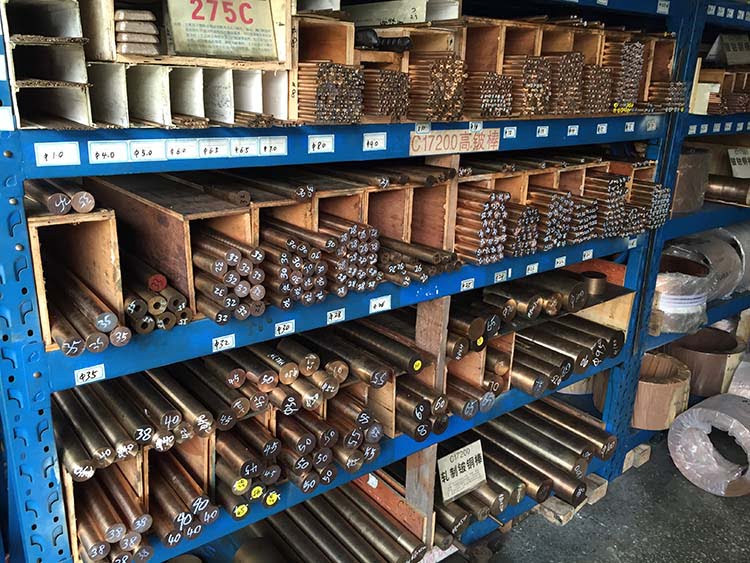Beryllium copper, an alloy primarily composed of copper and a small percentage of beryllium, stands out in the materials science landscape due to its exceptional properties. With applications ranging from aerospace components to electrical connectors, the processing of this alloy is a vital aspect of modern manufacturing. This article delves into the various stages of beryllium copper processing, highlighting its key properties and applications, along with a detailed table of its parameters.

Properties of Beryllium Copper
Beryllium copper is lauded for its remarkable mechanical and physical properties, which include:
- Формование и изгиб: Comparable to some steels, offering excellent performance under stress.
- Отличная электрическая и теплопроводность: Ideal for electrical components where efficiency is critical.
- Устойчивость к коррозии: Resists environmental degradation, making it suitable for a variety of conditions.
- Втулки: Particularly beneficial in hazardous environments.
Stages of Processing Beryllium Copper
1. Melting and Alloying
The first step in processing beryllium copper involves melting copper and incorporating beryllium. This typically occurs in a vacuum or inert atmosphere to prevent oxidation. Precise temperature control is essential to ensure uniform distribution of beryllium within the copper matrix.
2. Casting
Following melting, the beryllium copper alloy can be cast into shapes, typically using methods such as:
- Литье в песок: Suitable for larger components.
- Кастинг по выплавляемым моделям: Provides high precision for intricate designs.
The choice of casting method depends on the intended application and specific design requirements.
3. Hot and Cold Working
After casting, the material undergoes mechanical deformation through hot or cold working processes. Hot working, performed at elevated temperatures, improves ductility and reduces the risk of cracking. Cold working, done at room temperature, increases the alloy’s strength through strain hardening. Common techniques include:
- Прокатка: Producing sheets and plates.
- Экструзия: Creating rods and profiles.
- Ковка: Ideal for high-strength components.
4. Термическая обработка
Heat treatment is essential for enhancing the mechanical properties of beryllium copper. The process typically involves:
- Отжиг раствора: Dissolving the beryllium in the copper matrix.
- Старение: A controlled heating process that develops hardness and strength.
This step is crucial for tailoring the alloy’s properties to specific applications.
5. Обработка
Machining beryllium copper requires specialized techniques due to its toughness. High-speed steel or carbide tools are recommended, and optimal cutting speeds and feeds should be employed to minimize tool wear and ensure quality. Adequate coolant application is vital to control temperature and improve chip removal.
Key Parameters of Beryllium Copper
| Имущество | Формование и изгиб |
|---|---|
| Плотность | 8.24 g/cm³ |
| Предел прочности | 480 – 700 MPa |
| Электрическая проводимость | 15 – 25% IACS |
| Формование и изгиб | 120 – 160 W/m·K |
| Устойчивость к коррозии | Excellent in non-oxidizing environments |
| Втулки | Безопасно для использования во взрывоопасных средах. |
Applications of Beryllium Copper
The unique properties of beryllium copper allow for a wide range of applications, including:
- Электрические разъемы и контакты: Its excellent conductivity and non-sparking nature make it ideal for high-reliability electrical applications.
- Прецизионные инструменты: Commonly used in manufacturing high-precision tools and dies due to its durability and wear resistance.
- Аэрокосмические компоненты: Essential in various aerospace applications, including fasteners and structural elements, where high strength-to-weight ratios are critical.
- Горное оборудование: Utilized in tools and components that must withstand harsh conditions and heavy wear.
Вывод
Beryllium Copper machining is a sophisticated and precise undertaking that involves multiple stages, each crucial to achieving the desired properties of the alloy. Its outstanding characteristics—high strength, excellent conductivity, and non-sparking behavior—render it a valuable material across numerous industries. As demand for high-performance materials continues to grow, the significance of beryllium copper will only increase, solidifying its role in cutting-edge applications. By understanding the intricacies of beryllium copper processing, manufacturers can harness its full potential and contribute to advancements in technology and safety.
